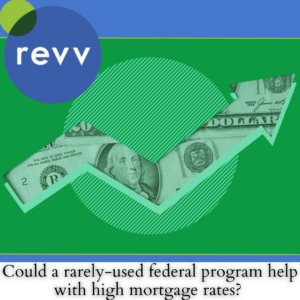 High mortgage rates, accelerating home prices and limited inventory are a challenging trifecta for homebuyers, especially those who fall into the moderate- and low-income brackets. Could a rarely-used federal program help?
High mortgage rates, accelerating home prices and limited inventory are a challenging trifecta for homebuyers, especially those who fall into the moderate- and low-income brackets. Could a rarely-used federal program help?
I’m referring to assumable mortgages, where owner/occupant buyers can take over an existing FHA/VA or RHS borrower’s loan, which could be a huge potential savings given the rate differential. (Assumable mortgages are not possible on conventional loans.)
In a note published by the Urban Institute on Friday, former Ginnie Mae president Ted Tozer said assumable loans enable the value of the mortgage savings to be partially capitalized into the home’s sales price, allowing the owner-occupant to outbid even a cash investor. It also allows home sellers to receive top dollar for the home, he said.
So why is this program so rare? For starters, mortgage rates historically have trended down, not up. Second, there are some significant “infrastructure” updates needed to grow loan assumption volume.
Servicers can only charge up to $900 to process, underwrite and close a transaction that includes a loan assumption. That isn’t enough to compensate servicers for their costs, let alone make a reasonable profit, Tozer argued. By the Mortgage Bankers Association’s estimate, it takes on average about $2,500 to process, underwrite and close a government loan. Tozer suggested “a fee of 1.3 percent of the balance of a loan being assumed would be fair to both the borrower and the servicer.”
Other stakeholders want even higher fees so they can compensate loan officers.
In a June letter, the Community Home Lending Association suggested increasing the lender fee to 2%, plus a $500 underwriting fee.
There’s also the matter of handling piggyback mortgages since the sales price in most deals will exceed the mortgage’s unpaid balance. Currently, piggyback loans have more stringent credit requirements. That too would have to change for assumable mortgages to gain greater popularity.
James Kleimann
